When it comes to digital display advertising, clarity is crucial. With modern High Definition screens, imagery can come to life, which makes digital displays one of the most engaging forms of advertising out of the home. However, one of the biggest problems digital advertising screens face, is maintaining clarity of image when the screen is installed in an outdoor location. Here, the reflection from the sun can fade an image and even make it unreadable.
Most outdoor digital advertising displays make use of some form of anti-reflective covering over the screen face. This screen protection reduces glare from the sun, preventing the image from being washed out. However, a consequence of some of these anti-reflective coverings is that they can cause dimming, resulting in a faded image, which for advertisers, can reduce the impact of the messaging. Therefore, depending on the requirements of the display, choosing the right anti-reflective protective covering for a screen is an important decision. Get it right, and the advertising display will be effective.
Screen protection
All digital advertising display needs some form of protection over the screen face. LCD and plasma display screens are vulnerable to damage, so even indoor screens require some protection from accidental impact or deliberate vandalism. However, for outdoor digital displays, this protection becomes even more important as outdoor screens, especially those in unsupervised locations are more vulnerable to vandalism.
However, providing protection from impacts needs to be assessed with the need to reduce sun glare and reflections. Glare could make advertising on an outdoor screen ineffectual. This problem is heightened in bright, sunny locations, especially where the screen is facing towards the path of the sun. Because of this, there are several different solutions for screen protection. However, each comes with its advantages and disadvantages.
Anti Reflective Glass
When it comes to clarity, Anti Reflective Glass (ARG) is by far the best solution. For outdoor advertising displays where sun glare could cause problems, ARG produces unrivalled clarity compared to other methods of anti-reflection. Anti Reflective Glass is chemically treated to scatter inbound light across the surface of the glass. Light transmitted from the display is unaffected by this coating, providing an optically clear image on the screen, even in high levels of sunlight.
For outdoor advertisers, where clarity is important, ARG provides by far the best solution for reducing glare. However, it does have a couple of disadvantages. Firstly, while Anti Reflective Glass is thermally toughened, making it much stronger than regular glass, it is still more fragile in comparison to other protective coverings, such as polycarbonate. However, an optional anti-shatter laminate over the screen can add further protection and ensure that if the glass is broken, it remains intact and doesn’t disperse into shards. Secondly, due to the sophisticated nature of its manufacture, ARG does cost more than other anti-reflective and protective solutions, but for advertisers wanting the most optically clear solution, ARG still provides an excellent return on investment, because the added clarity ensures the maximum exposure, no matter how high the brightness levels.
While Anti Reflective Glass is by far the best choice for reducing sun glare and providing the clearest image, sometimes other installation factors need to be considered when choosing a cover for a digital display, such as how the location of the screen and how much protection is required.
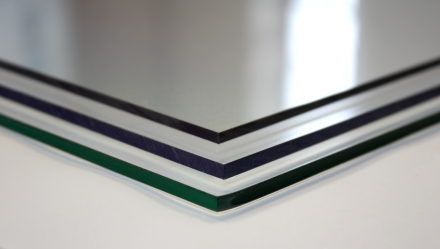
Polycarbonate
When it comes to physical protection, polycarbonate is the most durable solution. This shatterproof, lightweight screen covering is 20 times tougher than glass and can withstand even the severest of impacts. In fact, the high strength polycarbonate used in the manufacture of Armagard display enclosures is strong enough to resist subsonic bullet impacts. And even if the screen does succumb to an impact, it never shatters. This anti-shatter property is ideal for locations where broken glass could cause an injury, such as in a school, or could lead to a contamination threat, such as in a food production facility.
However, the biggest drawback with polycarbonate protection for digital displays is that it has no anti-reflective properties. This means for outdoor use, polycarbonate will provide no protection against sun glare, so it is more ideally suited to indoor locations or outdoor areas with low levels of sunlight.
Anti Reflective Polycarbonate
A compromise between protection and anti-reflection, Anti Reflective Polycarbonate is a shatterproof covering that has been treated to provide anti-reflective properties. However, unlike Anti-Reflective Glass, which scatters light hitting the screen, Anti Reflective Polycarbonate works on the principle of diffusion, essentially softening the light. This does mean that the transmitted light from the screen is also affected by the Anti Reflective Polycarbonate, which slightly dims the image. This means the clarity of the screen is reduced. For this reason, Anti Reflective Polycarbonate is best used in conjunction with high brightness screens, which are those with a candela rating two or three times higher than regular displays.
High brightness TV screens
Candela is the international unit for measuring the brightness of a display system. Most regular televisions, the kind people use for home TV viewing, have a candela rating of around 500 cd/m2 (candela per metre squared). High brightness screens have brightness levels three times this, often with candela ratings in excess of 1,500 cd/m2. These screens cope much better in high levels of sunlight, as the image is able to counter the ambient sunlight levels. However, a high brightness TV used for outdoor digital signage or advertising will still be vulnerable to screen glare, especially if it is facing the path of the sun, so some form of anti reflective material will still be needed for protection.
Choosing clarity
Without doubt, Anti Reflective Glass (ARG) as supplied by Armagard, is by far the best choice for reducing sun glare and reflections and maintaining the maximum clarity level. While ARG is a more expensive option than Anti Reflective Polycarbonate, its optical clarity is far superior. Screens protected with Anti Reflective Polycarbonate, may be well-protected from impacts, but they do suffer from some deterioration of the screen image, which is not the case with Anti Reflective Glass.
For advertisers, requiring the best possible image quality, Anti Reflective Glass should be the first choice and other anti-reflective measures, such as Anti Reflective Polycarbonate, should not be considered unless the demands of the location really demand the added protection offered by other solutions.
Other methods of reducing glare
Other measures can be taken to reduce the effect of sun glare and reflections, but may be restricted by the location. Firstly, if a screen angle can be adjusted to avoid facing the sun directly, it can help reduce the effects of glare and reflections. A slight adjustment can make a big difference, but this is obviously not possible in all locations, especially if a screen needs to face the direction in which an audience is approaching.
Secondly, if a screen can be sited beneath an overhang, awning or other form of shadow, it may be possible to get away with less effective and cheaper anti reflective measures than Anti Reflective Glass. Again, this may not be possible for many locations.
Finally, ensuring the display used is a high brightness device, will limit the problems caused by sun glare and reflections. High brightness screens are available from many of the main display and TV manufacturers, and it is really worthwhile spending the extra money as these displays can not only reduce the problems associated with glare and reflection, but they’re also more noticeable and vibrant, especially in outdoor locations or areas where there is high ambient light levels.
Deciding on the best solution
Different locations and different uses for digital displays can affect the anti reflective requirement. The need for durability, combined with the need for clarity, may involve some compromise, but it is possible to decide what the best solution is, by asking a few questions.
• Purpose of the screen
The purpose of a screen can make a big difference to the type of anti-reflective material used to protect a screen. For advertisers, clarity is by far the most important factor. Anti Reflective Glass will provide a clearer, more vivid image, which is going to be more engaging and noticeable to people. The same is true of screens used for outdoor entertainment, such as TVs outside pubs, bars or restaurants, where people will want a clear image to watch sports or other entertainment.
• Location of the screen
Where the screen is located also affects the type of anti-reflective material needed. For outdoor, sunny locations, Anti Reflective Glass is going to ensure the clearest possible image and reduce reflection and glare. However, for outdoor screens under canopies or in otherwise shaded areas, Anti Reflective Glass in combination with a high brightness screen may be all that is needed. While for indoor screens, there may not even be a need for any anti-reflective measures, unless windowed sunlight is causing problems.
• Risk of impact
Not all outdoor locations face the same risk of vandalism or impact. For instance, a lone screen in an unsupervised car park will be at greater risk of attack than a screen positioned in a busy high street, which will have less need for impact protection making Anti Reflective Glass the better solution.
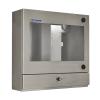
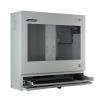
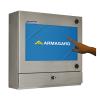
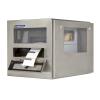
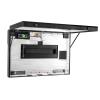
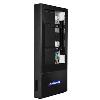
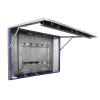
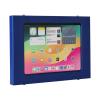
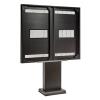
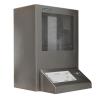






Comments are closed.